Today, we’re going to walk you through everything you need to know about NVMe SSDs.
In addition to answering all the questions that might be on your mind and helping you determine whether or not an NVMe SSD is even suitable for you, we’ll also provide you with a selection of our top three NVMe SSD picks.
If you’re already well-informed on this matter, feel free to use the Table of Contents to skip down to our picks. Otherwise, continue through the bulk of this article, which is formatted like an FAQ.
TABLE OF CONTENTS
If you have any questions remaining after you finish, leave a comment below so that we can help you out!
Frequently-Asked Questions About NVMe SSDs, and Answers To Know Before Buying Them
What is an NVMe SSD, and what sets it apart form other SSDs?
First and foremost, let’s answer the most obvious question: what is an NVMe SSD?
NVMe stands for Non-Volatile Memory Express.

Image Credit: Western Digital
As that name implies, there are two kinds of Memory inside a PC – Volatile Memory, and Non-Volatile Memory.
Volatile Memory is found in your System RAM and GPU’s VRAM, which are constantly being written to and read from. They are ever-changing by nature, so they are Volatile. In simpler terms: they are cleared entirely when the power goes out.
Non-Volatile Memory refers to things like your hard drive (HDD) or an SSD, which are written to and read from as well but…much more stable. Unlike Volatile memory, Non-Volatile Memory is kept no matter how many times you reboot your system or turn off the power. It is used for long-term storage of data, rather than short-term management and cache by the CPU or GPU.
NVMe, therefore, is a standard for non-volatile storage – solid-state storage, specifically.
The “Express” part comes into play because NVMe piggybacks on top of your PC’s pre-existing PCI Express (where your GPU is plugged in to) bandwidth in order to achieve higher speeds.
Most storage drives use the SATA standard, which is limited to 6 Gigabits per second. (8 bits are 1 byte, so you’ll have ~750MByte/s transfer speed on a 6 Gigabits connection)
While this SATA standard is plenty fast for mechanical hard drives— much faster than the drives themselves can read or write data, actually— it quickly became a bottleneck for solid-state storage, which does not have nearly the same limitations.
While SATA SSDs are still a fairly good value for most consumers even when compared to HDDs, their maximum speed is nowhere close to NVMe— but we’ll elaborate on that later.
What is M.2?
Most NVMe SSDs are also M.2 SSDs, but M.2 SSDs using SATA bandwidth also exist. This can be confusing!
Some M.2 SSDs can function as either NVMe or SATA SSDs- so what’s the difference?
Simply put, M.2 is a form factor. Imagine something about as long as a USB thumb drive and about as thin as a wafer, and you have an M.2 drive.
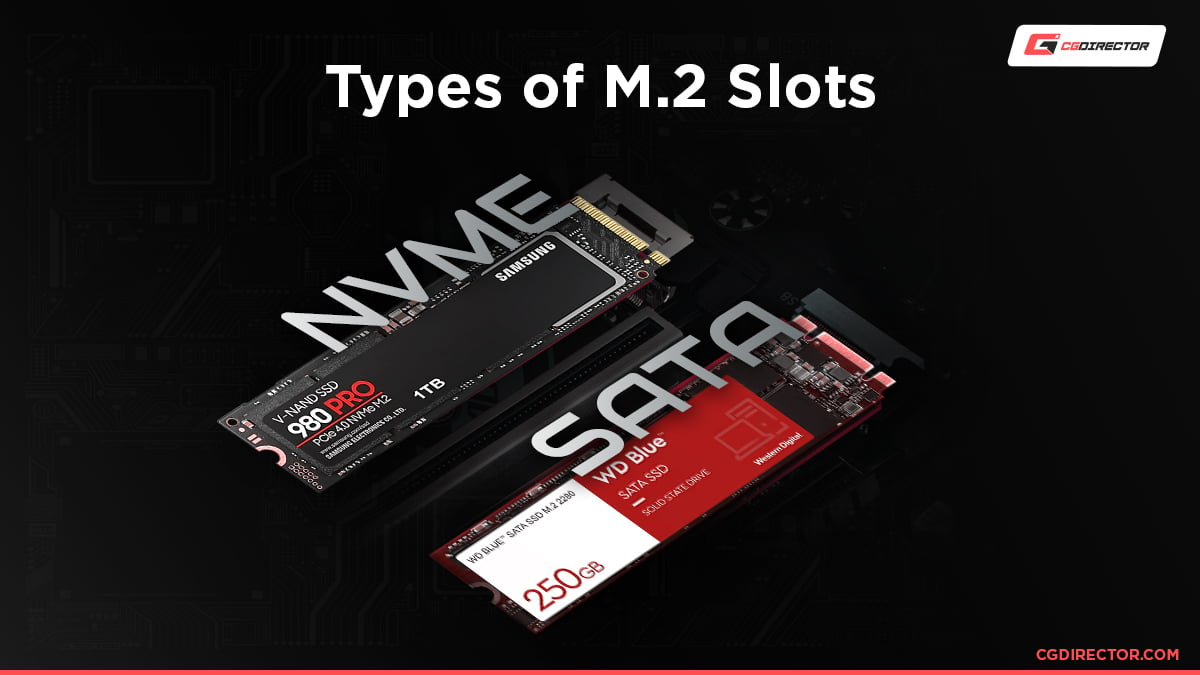
M.2 drives are popular in both full-sized desktop tower PCs and low-profile laptops and tablets, due to their ultra-compact size.
It’s a particularly useful form factor for SSDs, which generally don’t even come close to filling a full 2.5-Inch SATA drive enclosure (at least the lower capacities).
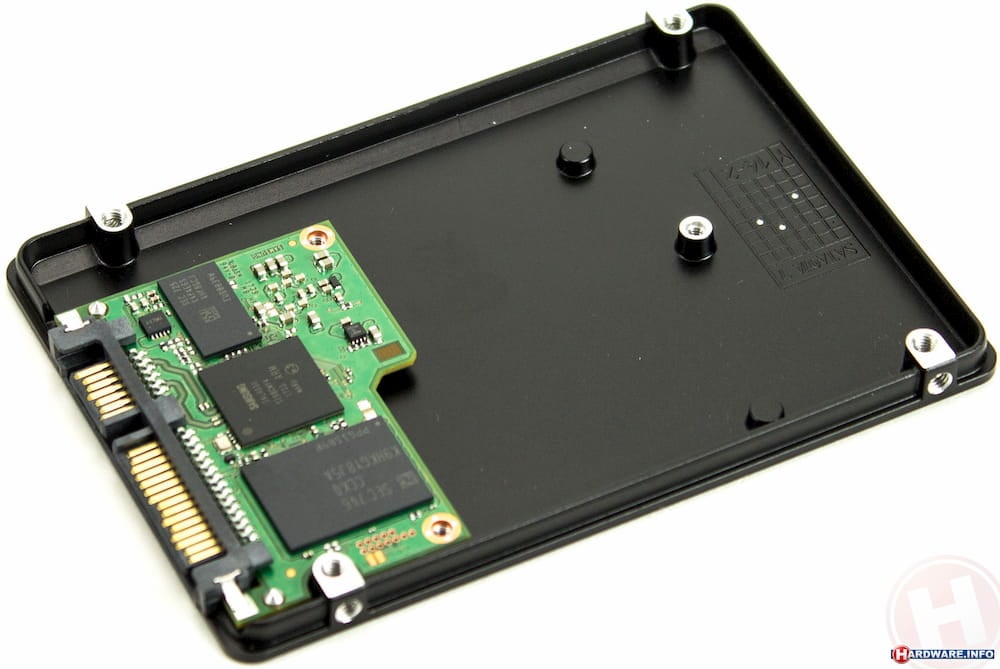
Image Credit: Samsung. Note that the actual SSD takes up only a part of a 3.5-inch drive’s enclosure.
There are two types of M.2 SSDs: SATA and NVMe. If you want to achieve the fastest speeds with an SSD, verify that your SSD says either “PCIe” or “NVMe”!
My PC doesn’t have M.2 slots- can I still use NVMe SSDs?
With new technology entering the market, one issue always arises: those left behind.
The PC space is usually a lot better about this than, say, smartphones or game consoles.
Where those devices severely lack modularity, a fully-fledged desktop PC will allow you to replace essentially all of its components over the course of its lifespan.
Once you replace something like the motherboard, though, it isn’t necessarily the same PC anymore. (Your OS manufacturer probably won’t think it is, anyway.)
While laptops are often more limited than this, you can still at least replace storage and memory in the vast majority of laptops.
Unfortunately, many devices being used today are not compatible with your common M.2 SSD, because…well, they don’t have M.2 slots. Many PCIe Gen 3 motherboards, and all Gen 2 and older motherboards, will have this downside.
So, if you don’t have an M.2 slot on your motherboard but you still want to experience NVMe speeds, what do you do?
You have two options, one if you’re using a laptop:
- Use a PCI Express adapter card (desktop only)
- Use a powerful External SSD over Thunderbolt (ideally) or USB 3/4
How much faster is an NVMe SSD compared to a SATA SSD?
If you want a short answer, the answer is way faster. Like, super super fast. Many times faster.
If you want a detailed answer:
First, we need to quantify just how fast a SATA SSD can be. SATA SSDs can achieve a maximum read speed of around ~550 MB/s, which is roughly 4.4 Gigabits.
The write speed is usually closer to 500 MB/s on a high-end SATA SSD, which is roughly 4 Gigabits.
As you may recall from earlier in the article, SATA connectors only allow a maximum of 6 Gigabits per connection.
This means that neither of these full speeds can be achieved simultaneously – reaching full read speed will reduce write speed, and vice versa.
You’re generally not going to run into this as an actual issue, but it does result in some great limiting factors for a SATA SSD.
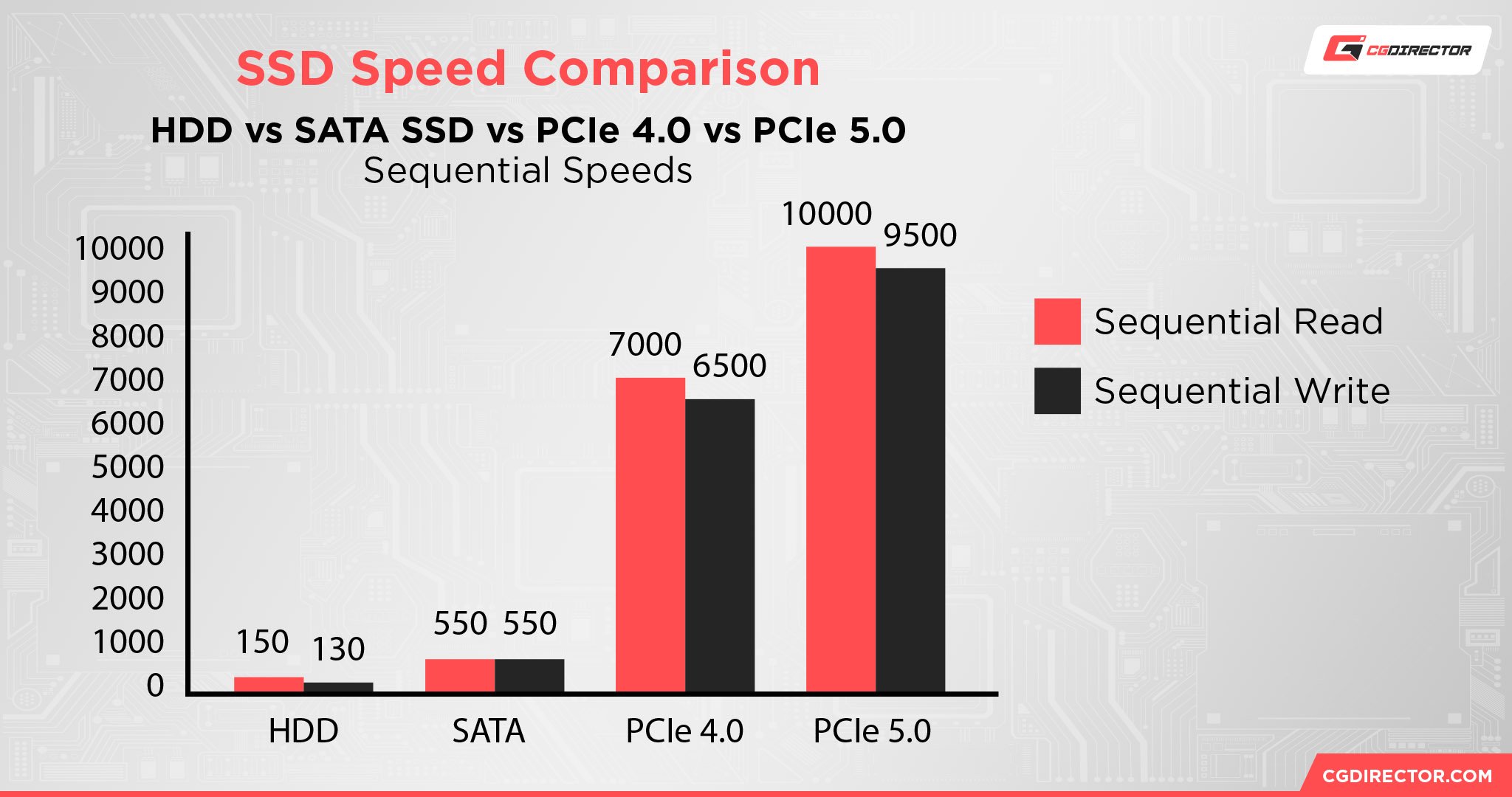
NVMe SSDs are manufactured to work with PCI Express 3.0 and newer, with the best performance gained by matching NVMe Generation with PCIe Generation. NVMe drives are also, however, backward compatible with older NVMe slots but not SATA M.2 slots.
There are ways to use newer NVMe and M.2 drives in PCs that wouldn’t otherwise support them with the use of PCI Express cards, but always be mindful that you’ll be limited by your PC’s version of PCIe no matter what when making upgrades.
What kind of price-per-gigabyte can I expect from an NVMe SSD?
| 7200 RPM HDD | SATA SSD | NVMe Gen 3 SSD | NVMe Gen 4 SSD | NVMe Gen 5 SSD | |
|---|---|---|---|---|---|
| Price / GB [~1TB / 2 TB Drive Range] | ~0.02$ | ~0.04 to 0.03$ | ~0.05 to 0.04$ | ~0.056$ to 0.047$ | ~0.12$ to 0.16$ |
These days, price-per-gigabyte serves as a pretty solid metric of how much value a given SSD provides. Since we now have over three tiers of SSD performance, I’ve updated the table above to indicate up-to-date cost-per-gig estimations for the various tiers of SSD, and the ultra-low cost of 7200 RPM HDDs to compare.
How does NVMe price-per-gig compare to SATA SSDs?
Entry-level Gen 3 and Gen 4 NVMe are both so ridiculously close to SATA SSDs in price that you should honestly just get NVMe. Whatever miniscule price savings you get from getting SATA SSDs instead is lost when you think about all the performance left on the table for just $5 or $10 at most.
How does NVMe price-per-gig compare to SATA HDDs?
NVMe price per-gig is still significantly higher than HDDs, with even the entry-level NVMe prices starting at 2x HDD pricing. Get up to NVMe Gen 5 and you’re now looking at as high as 16 cents per gigabyte, when HDDS have been under 2 cents per gigabyte for ages. That’s a near 8x pricing increase from HDDs to modern SSDs!
Are external NVMe SSDs available?
Yes!
The best external NVMe SSDs available to you will depend on your PC and its maximum USB or Thunderbolt capabilities, though. I highly recommend any compatible portable SSDs from the brands listed in my Best SSD Brands article, as many of them dabble in creating excellent portable SSDs.
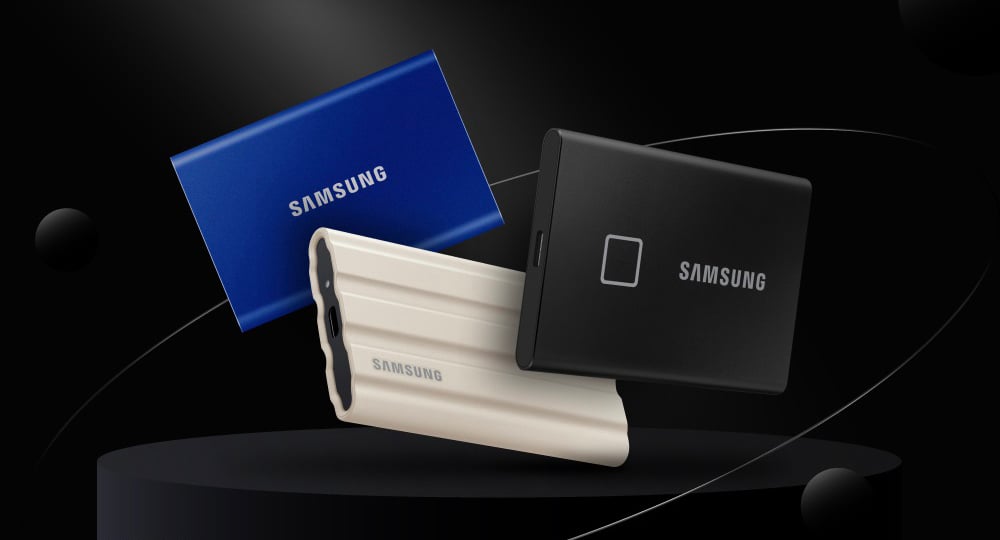
Image Credit: Samsung
At time of writing, my favorite external SSDs are the USB 3.2×2 (up to 20 Gigabits) Samsung T7 Shield Portable at ~$230 for 4 TB, or the SanDisk Professional G40, which is ~$394 for 2TB but supports full Thunderbolt 3/4 speed at 40 Gigabits. Both SSDs also have cheaper, lower-capacity models on their respective pages, if their prospective value interests you but you want to scale down the budget on them a bit.
Also, comment below and let us know if external SSDs should have their own article! I’d be happy to keep a roundup of those up-to-date, but the community’s gotta want it to make it happen.
What kind of real-world performance improvements can I expect?
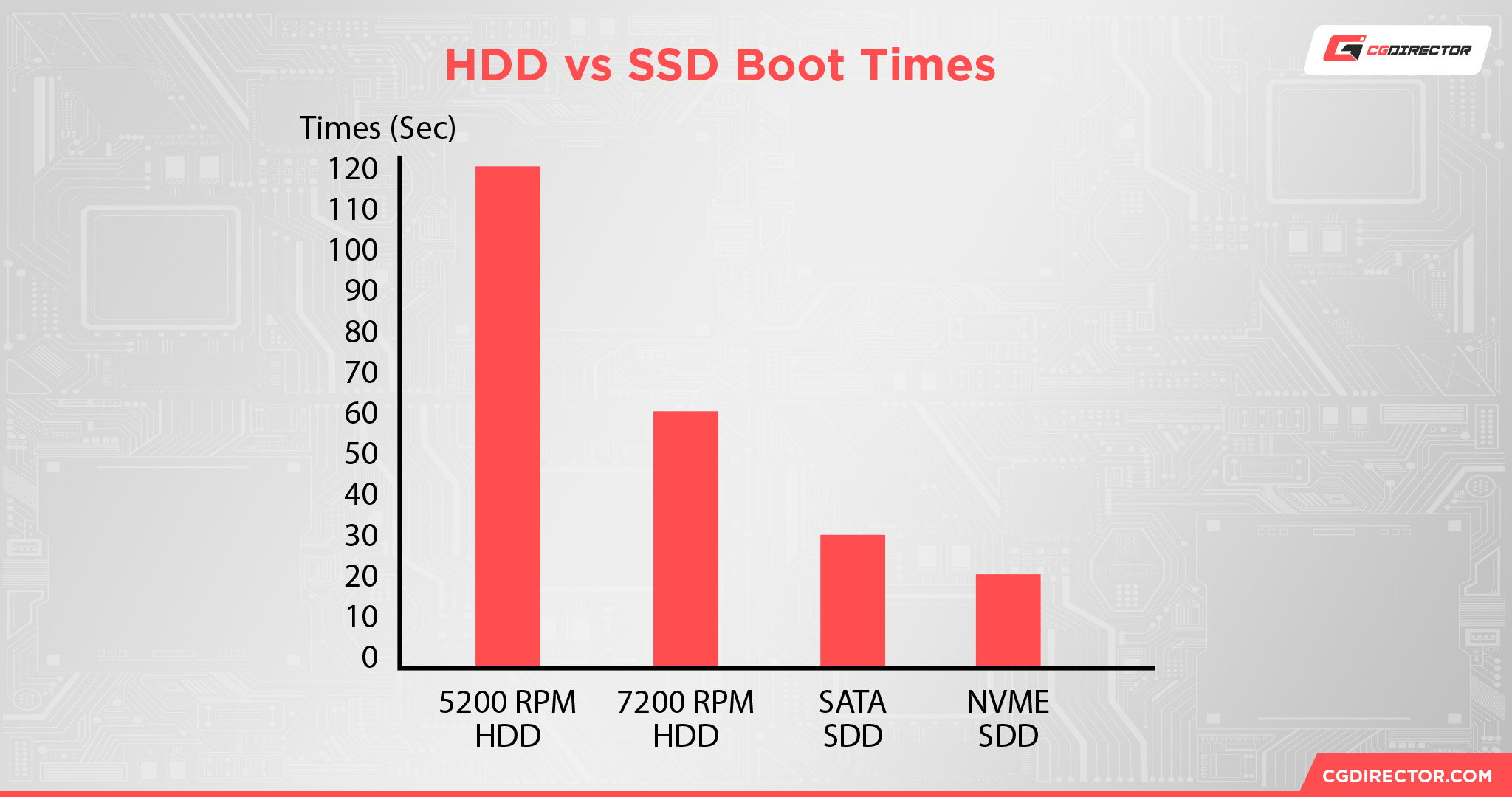
In terms of real-world performance differences, the changes from an NVMe SSD to an HDD will be shocking and revolutionary. Meanwhile, the changes from an NVMe SSD to a SATA SSD are mostly just “okay”, since you get most of SSD’s biggest benefits by just making that initial leap from HDDs to begin with. Even most SATA SSDs can provide a good experience, despite being capped to roughly .5 GB/s versus the many GB/s available to all NVMe drives. The biggest example of this is shown in the graphic above, where OS startup times are massively improved by getting a SATA SSD but aren’t heavily impacted by going to NVMe afterward.
That said, most professional workloads benefit from the boost provided by faster generations of NVMe storage! The issue for a while has been that most applications, even games, haven’t been making particularly good use of NVMe storage even if there are noticeable improvements when they’re run on SSDs. The advent of technologies like DirectStorage and RTX I/O, though, modern games and other apps can make more direct use of NVMe storage than ever, allowing for revolutionary loading times in games like Ratchet & Clank: Rift Apart.
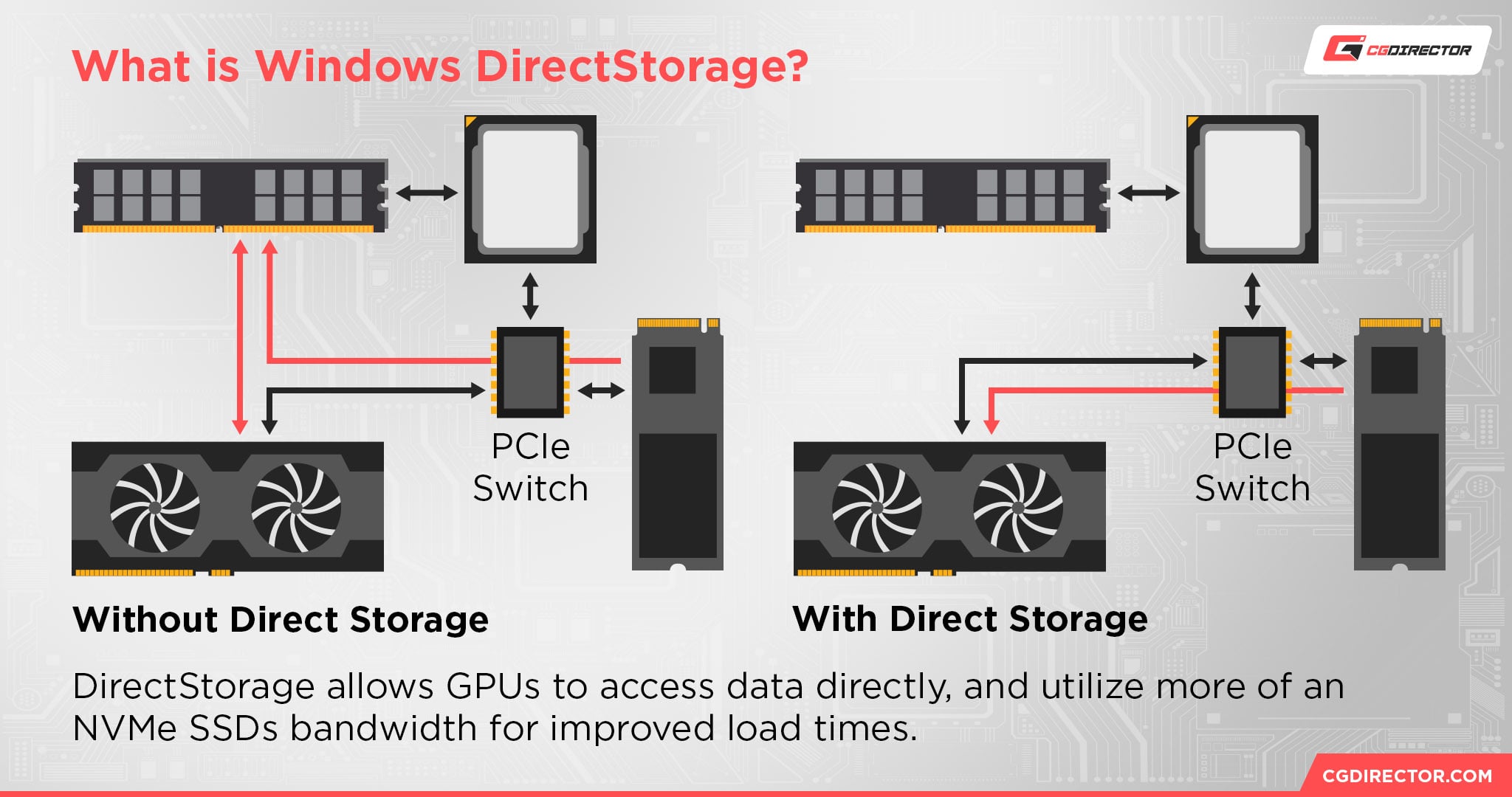
What’s the deal with PCI Express 4.0 NVMe SSDs? And NVMe 5.0, NVMe 6.0, etc
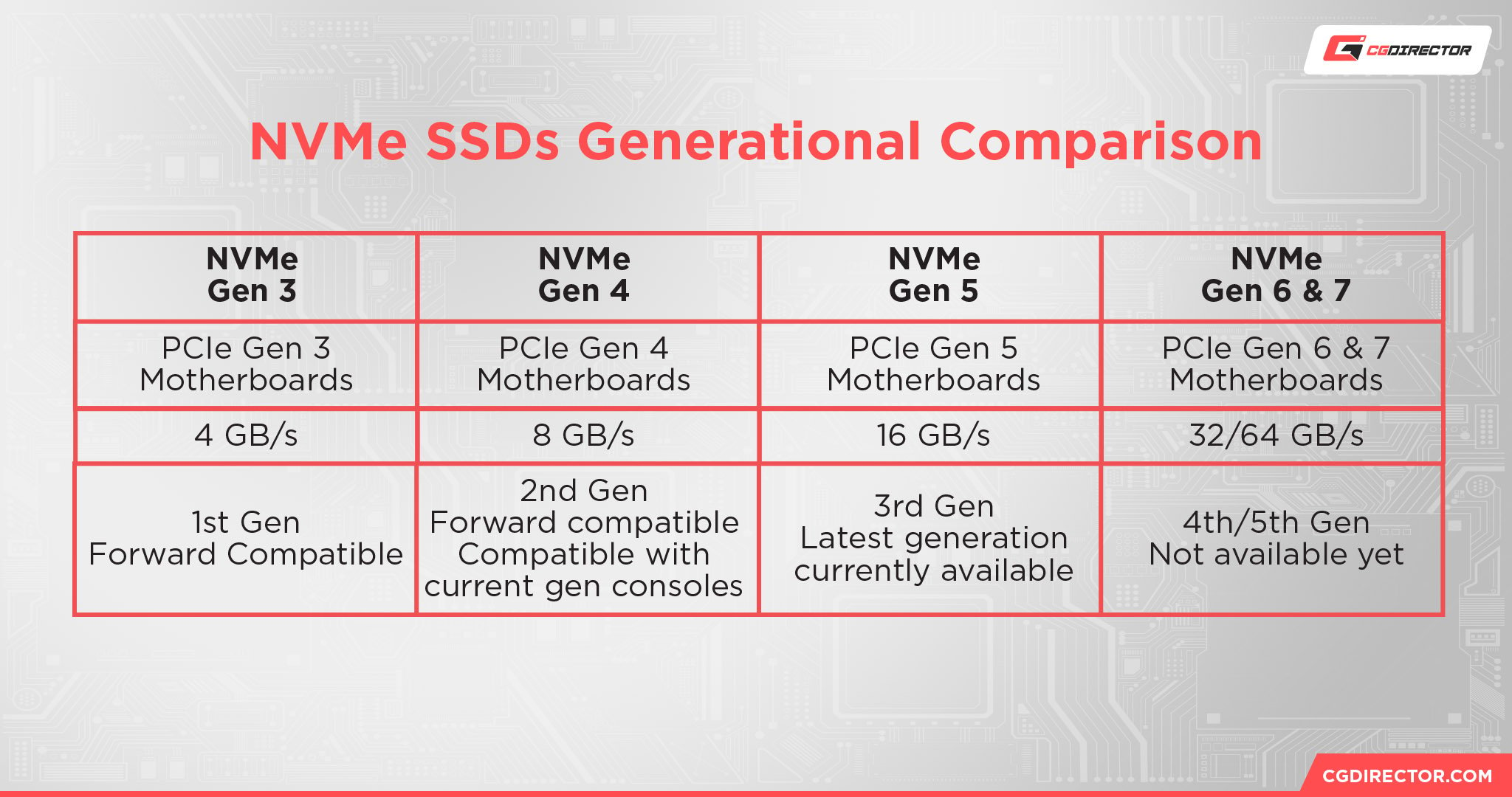
The first-released generation of NVMe SSDs was NVMe Gen 3, corresponding to the PCI Express Gen 3 motherboards they were made for. The first generation was pretty short-lived before NVMe Gen 4 swooped in, and NVMe Gen 4’s successors have started swooping into the market just as fast. The original version of this article was written just a few years ago, but now even the occasional NVMe 6 SSD can be seen in the market! Whenever that stabilizes, we’ll have to be back to add Gen 6 recommendations, but fortunately we aren’t quite there in the consumer space just yet.
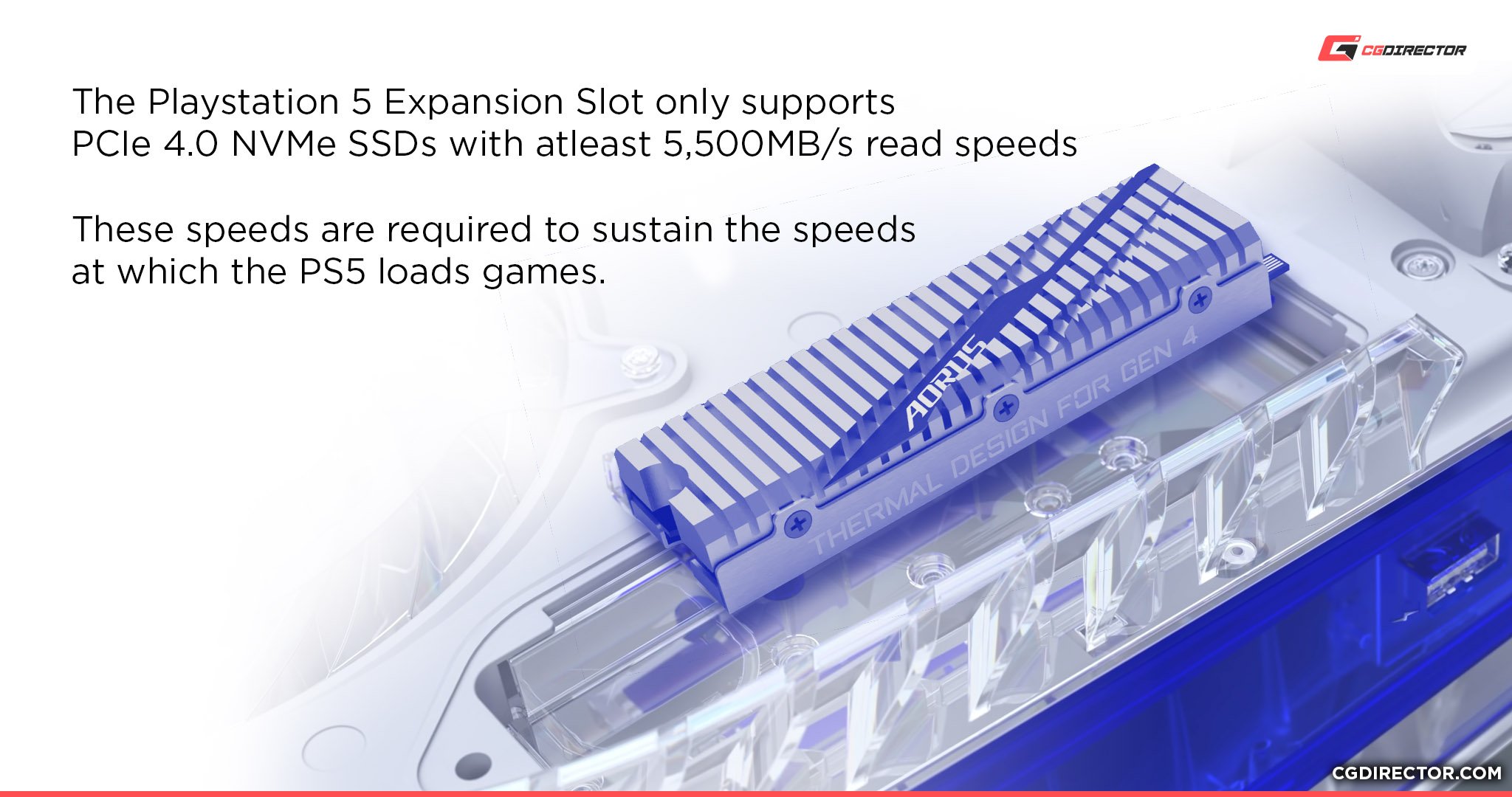
Worth noting: modern gaming consoles like PlayStation 5 are built around NVMe SSDs that offer up to 5.5 GB/s in total speeds. Your NVMe SSD doesn’t necessarily need to be that fast to have a good gaming experience on PS5 or PC, but that’s your recommended target if you can reach it with NVMe Gen 4 or newer.
What is an Intel Optane drive?
Intel Optane drives are a different application of SSD storage and PCI Express bandwidth. They’re technically NVMe drives, but their functionality is different enough that they’re almost considered entirely different products.
Where NVMe storage drives provide raw storage capacity, Optane drives are built to accelerate the storage you already have in your system, even if it’s a lowly HDD.
If this sounds like a weirdly specific thing that probably isn’t for consumers, then you’d be absolutely right.
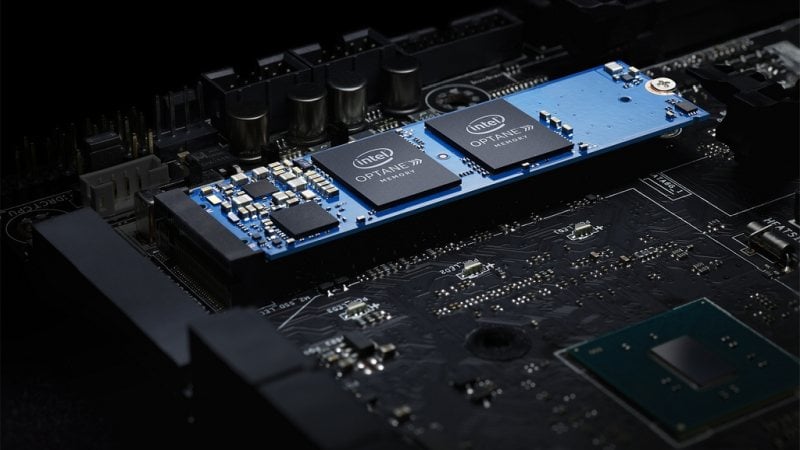
Image-Credit: Intel
Intel Optane is used most frequently by server operators in data centers and other professionals in order to accelerate much larger drives in high-end workloads. It can also be used as a straight-up SSD, though with some caveats. When using Optane as an SSD, the sequential speeds are often lower but, random read and mixed speeds are often far higher. Either of these high-end scenarios come with high-end price tag to match.
Unfortunately, Intel has also discontinued Intel Optane as of Q2 2022. While some Intel Optane drives still exist in the wild and function as described above, they are unfortunately no longer being manufactured and thus, aren’t suitable for placement in this article. (It’d be a stretch anyway, since Optane is a little different than a standard SSD.)
Best NVMe SSDs: Our Top 6 Picks
Below, I’ve included a list of our top 6 picks for the best NVMe SSD, with 2 picks per generation. Whatever your needs are, you should be able to find the NVMe drive appropriate for your needs below!
#1 – Best Value NVMe Gen 3 SSD: TEAMGROUP MP33
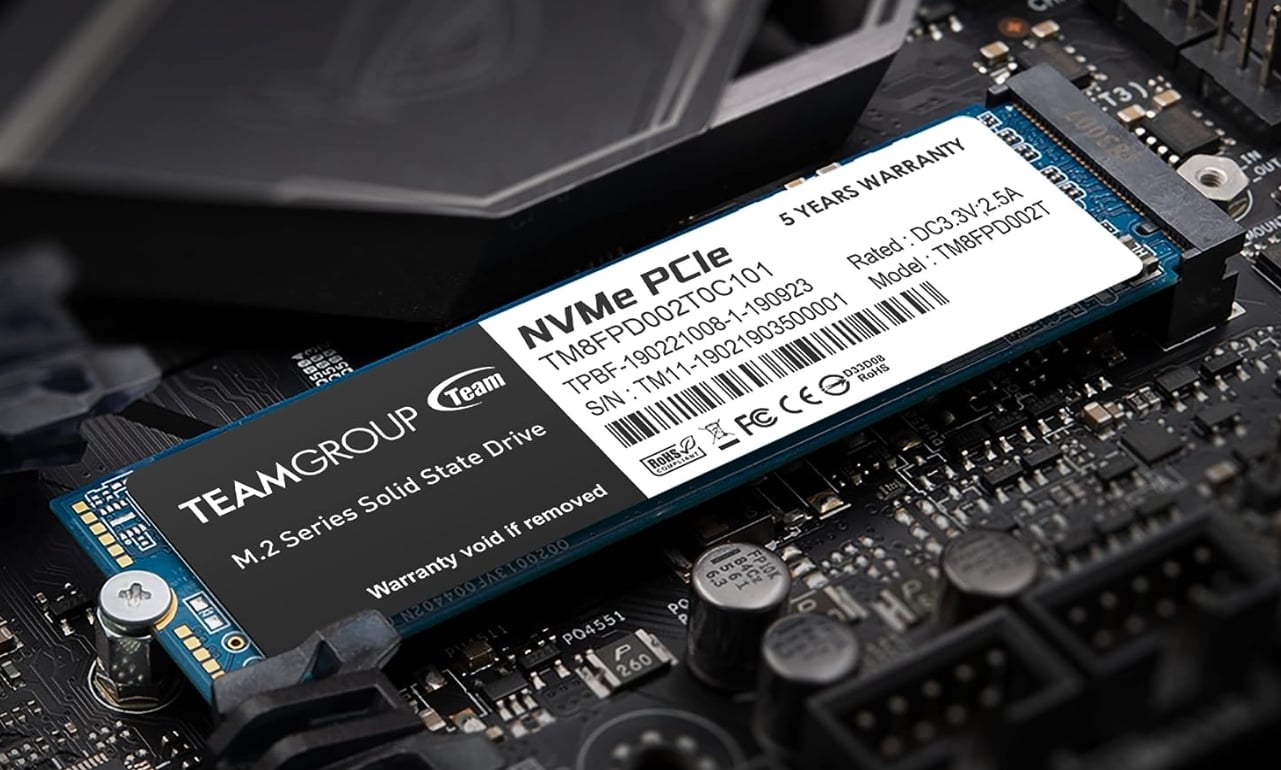
Image-Source: Teamgroup
Specs:
- Estimated Read Speed: Up to 1800 MB/s (1.8 GB/s)
- Estimated Write Speed: Up to 1500 MB/s (1.5 GB/s)
- Capacity: 1 TB
- Supported PCI Express Standard: PCI Express 3.0
- Estimated Pricing: $48
- Estimated Price-Per-Gig: $0.048c per gig.
- Heatsink: N/A
- NVMe SSD Warranty: TEAMGROUP has a 5 Year Warranty on SSDs.
- Who It’s For: People stuck on PCIe Gen 3 or older who want a faster-than-SATA storage drive at as good a value as possible.
#2 – Best High-End NVMe Gen 3 SSD: TEAMGROUP MP34
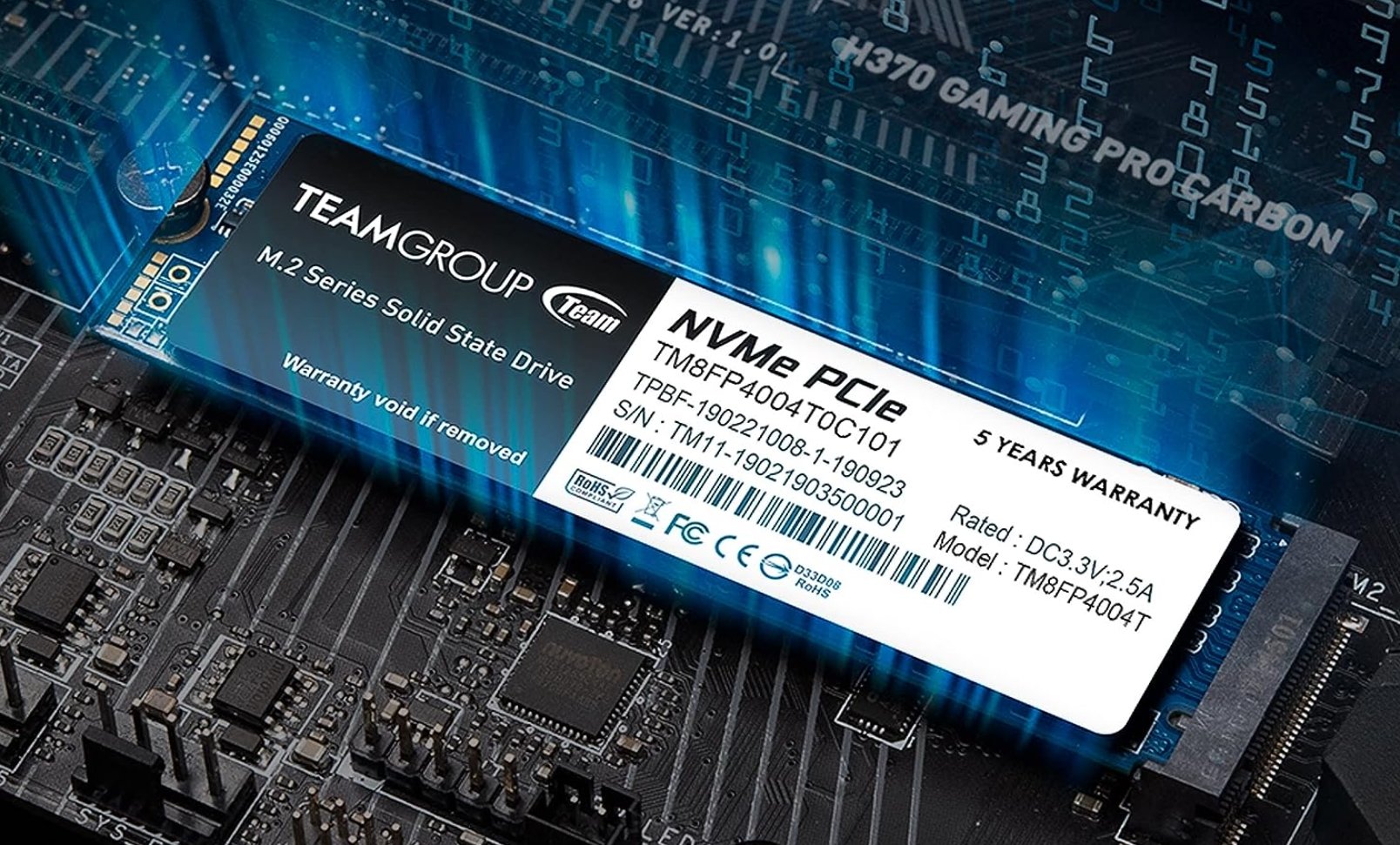
Image-Source: Teamgroup
Specs:
- Estimated Read Speed: Up to 3500 MB/s (3.5 GB/s)
- Estimated Write Speed: Up to 2900 MB/s (2.9 GB/s)
- Capacity: 4 TB
- Supported PCI Express Standard: PCI Express 3.0
- Estimated Pricing: ~$162
- Estimated Price-Per-Gig: $0.04c per gig.
- Heatsink: N/A
- NVMe SSD Warranty: TEAMGROUP has a 5 Year Warranty on SSDs.
- Who It’s For: People who are still on PCIe Gen 3 or older who want the fastest possible NVMe Gen 3 drive. The only choice for a pro stuck on PCIe Gen 3.
#3 – Best Value NVMe Gen 4 SSD: Corsair MP600 Core XT
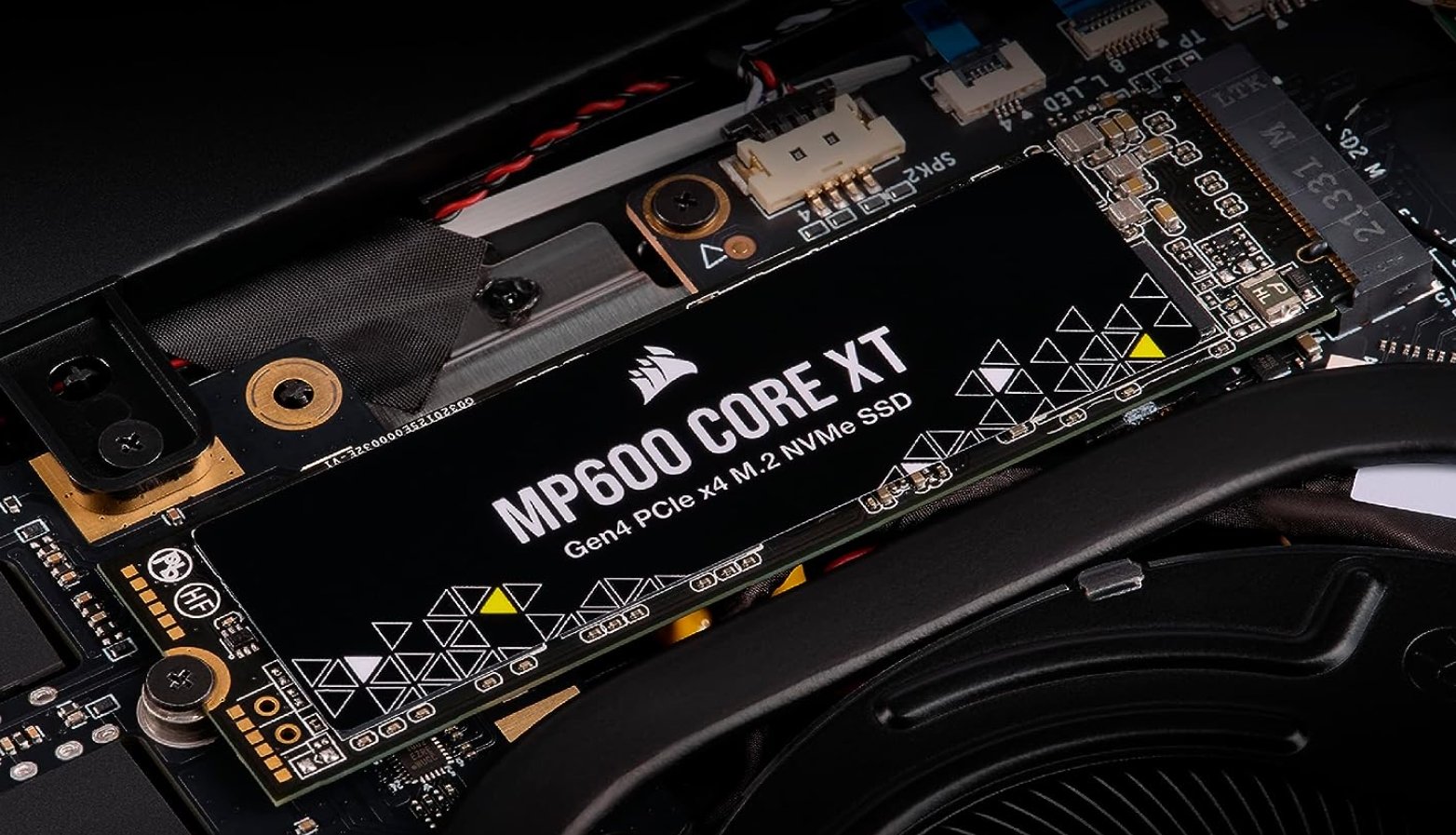
Image-Credit: Corsair
Specs:
- Estimated Read Speed: Up to 5000 MB/s (5 GB/s)
- Estimated Write Speed: Up to 4400 MB/s (4.4 GB/s)
- Capacity: 2 TB
- Supported PCI Express Standard: PCI Express 4.0
- Estimated Pricing: ~$95
- Estimated Price-Per-Gig: $0.047 per gig
- Heatsink: N/A (mobo heatsink or open air recommended)
- NVMe SSD Warranty: Corsair SSD Warranty is 3 Years unless it’s Neutron, which makes it 5 Years. (This is not a Corsair Neutron SSD).
- Who It’s For: People who want a high-value NVMe Gen 4 SSD for use in an up to mid-range PC or a gaming console reliant on NVMe Gen 4 support. Should work well for pros on a budget.
#4 – Best High-End NVMe Gen 4 SSD: Silicon Power US75
Image-Credit: Silicon Power
Specs:
- Estimated Read Speed: Up to 7,000 MB/s (7 GB/s)
- Estimated Write Speed: Up to 6500 MB/s (6.5 GB/s)
- Capacity: 4 TB
- Supported PCI Express Standard: PCI Express 4.0
- Estimated Pricing: $209
- Estimated Price-Per-Gig: $0.052 per gig
- Heatsink: N/A (mobo heatsink or open air recommended)
- NVMe SSD Warranty: Silicon Power SSD Warranty is 5 years.
- Who It’s For: People who want a high-speed NVMe Gen 4 SSD, pushing the limits of their past-gen hardware. Should be ideal for pros, too. Not the absolute fastest Gen 4 SSD, but definitely the fastest while maintaining this superb price per gig.
#5 – Best Value NVMe Gen 5 SSD: Corsair MP700
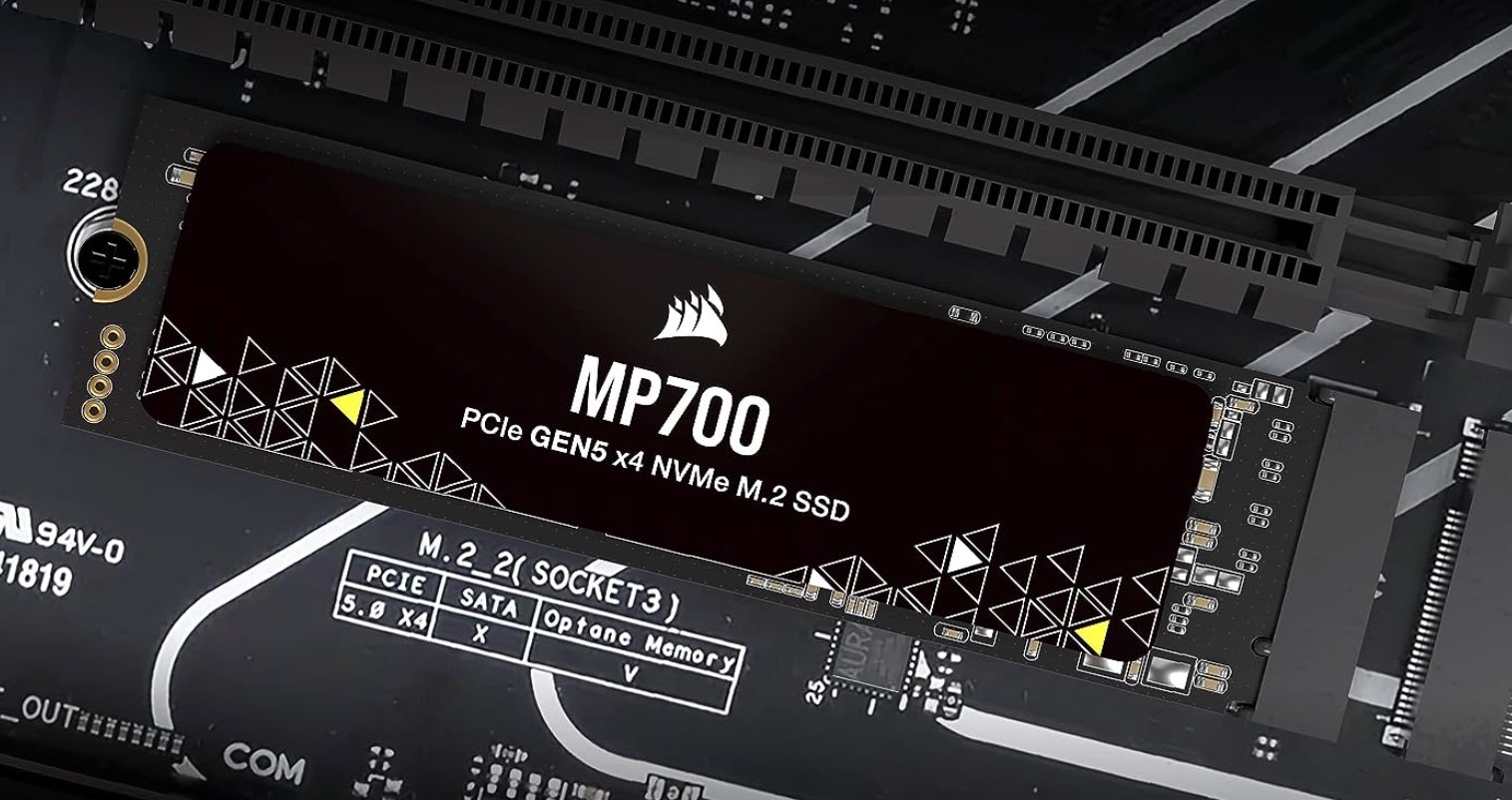
Image-Credit: Corsair
Specs:
- Estimated Read Speed: Up to 10,000 MB/s (10 GB/s)
- Estimated Write Speed: Up to 10,000 MB/s (10 GB/s)
- Capacity: 2 TB
- Supported PCI Express Standard: PCI Express 5.0
- Estimated Pricing: $240
- Estimated Price-Per-Gig: $0.12 per gig
- Heatsink:
- NVMe SSD Warranty: Corsair’s SSD warranty coverage is 3 years.
- Who It’s For: People who want a taste of what NVMe Gen 5 has to offer compared to past generations. 10 Gigs per second, baby!
#6 – Best High-End NVMe Gen 5 SSD: Crucial T700
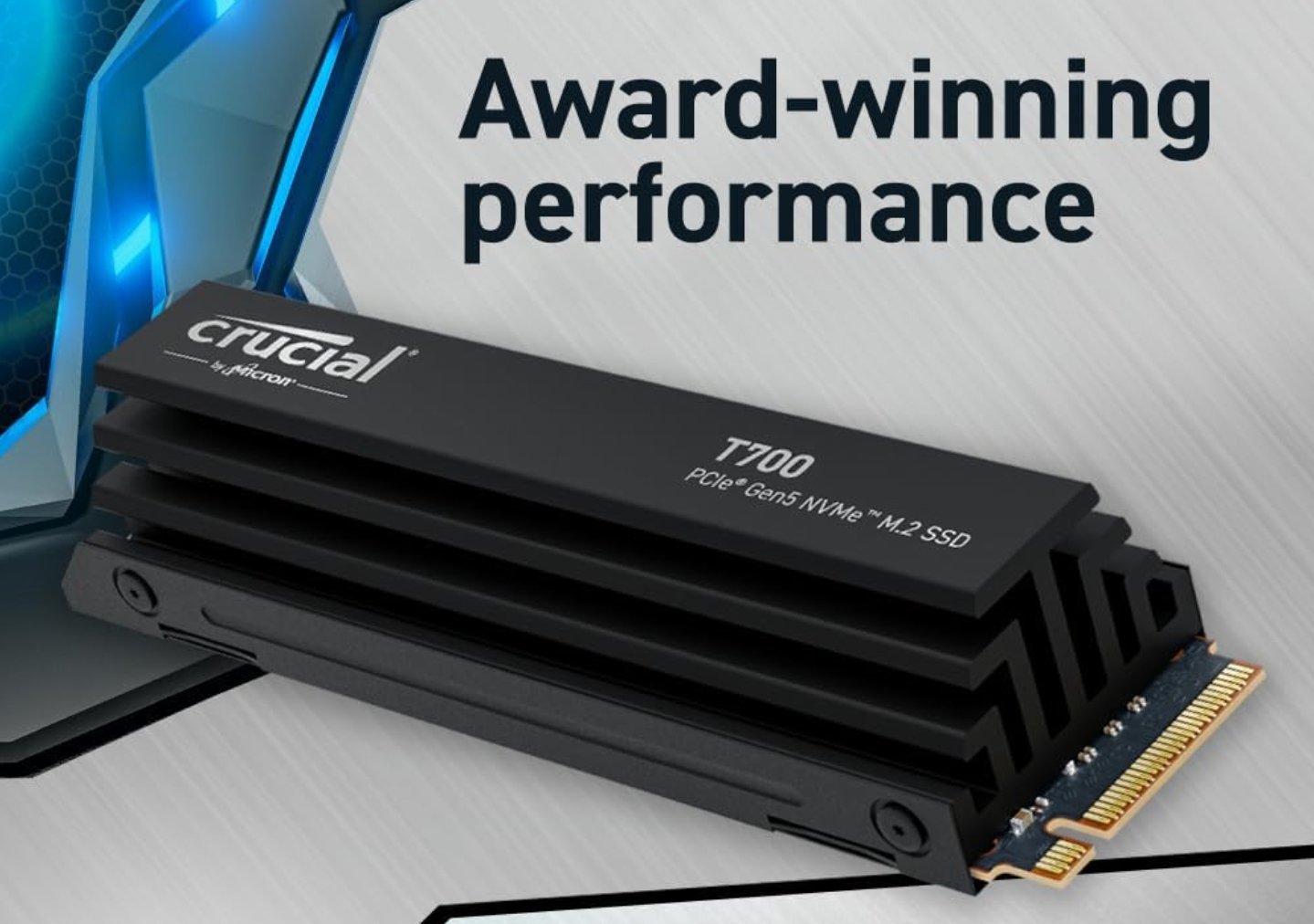
Image-Credit: Crucial
Specs:
- Estimated Read Speed: 12,400 MB/s (12.4 GB/s)
- Estimated Write Speed: 11,800 MB/s (11.8 GB/s)
- Capacity: 4 TB
- Supported PCI Express Standard: PCI Express 5.0
- Estimated Pricing: $444
- Estimated Price-Per-Gig: $0.011 per gig
- Heatsink: Yes, but No Heatsink Version available if desired (At least Mobo Heatsink Recommended)
- NVMe SSD Warranty: Crucial’s SSD warranty coverage is 3 years.
- Who It’s For: People who want the cutting edge of NVMe speeds right now. Who knew 12 Gigs per second was possible for consumer storage? Not whoever designed SATA, that’s for sure.
Over to you
That’s about it! If you want any more help with NVMe SSDs or PC hardware in general, feel free to fire off your questions in the comments section below, our brand-new Discord server, or our classic CGDirector Forum. Whichever you choose, our Expert Staff and Community will be happy to help!
![The Best NVMe SSDs Available Today [Updated] The Best NVMe SSDs Available Today [Updated]](https://www.cgdirector.com/wp-content/uploads/media/2020/01/BestNVMeSSDs-FTwitter_1200x675-1200x675.jpg)
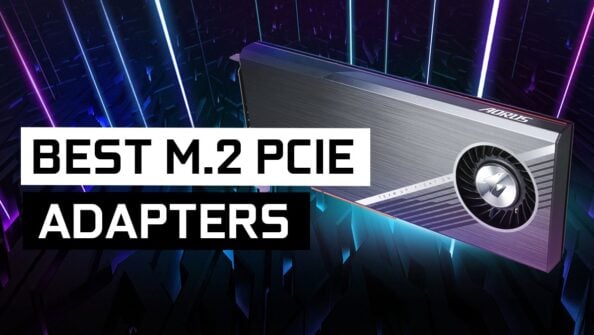
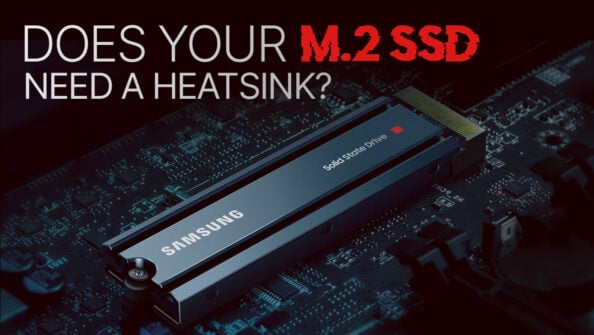
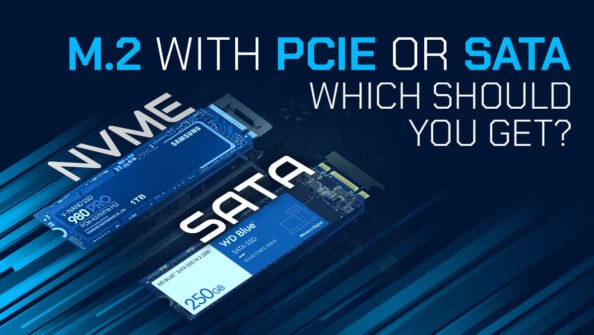
![NVMe Generations Compared [Gen3/4/5/6] NVMe Generations Compared [Gen3/4/5/6]](https://www.cgdirector.com/wp-content/uploads/media/2023/10/NVMe-Generations-Compared-Twitter-594x335.jpg)

13 Comments
26 April, 2023
Which ssd is Best suitable for HP NOTEBOOK 15 PV
26 April, 2023
Iam confused about To choose Which SSD to select my old PC which is now very slow running with ssd and also don’t know which ssd supports my SSD, Could you please help me out to Choose Best SSD for my laptop HP NOTEBOOK 15 PC with a best price please?
26 April, 2023
I’m gonna need a more specific model name and number to help you with that.
24 July, 2022
Nice article.
There is one variable you missed. Longevity or life expectancy.
Paying money for a high end component only to find that it fails in 2 years with at best inconvenient problems is something that needs to be understood at the time of purchase. TBW being the term to look for.
It’s frustrating that this value is not part of the performance spec as standard. The values can range from 30 to 600. So there is quite a variance. Having this topic covered in articles like this one would help raise visibility off this factor and potentially improve product life and consumer experience.
Thanks for the article.
8 August, 2022
Thanks Fred,
You agree completely. Will add a section to the article.
Thanks,
Alex